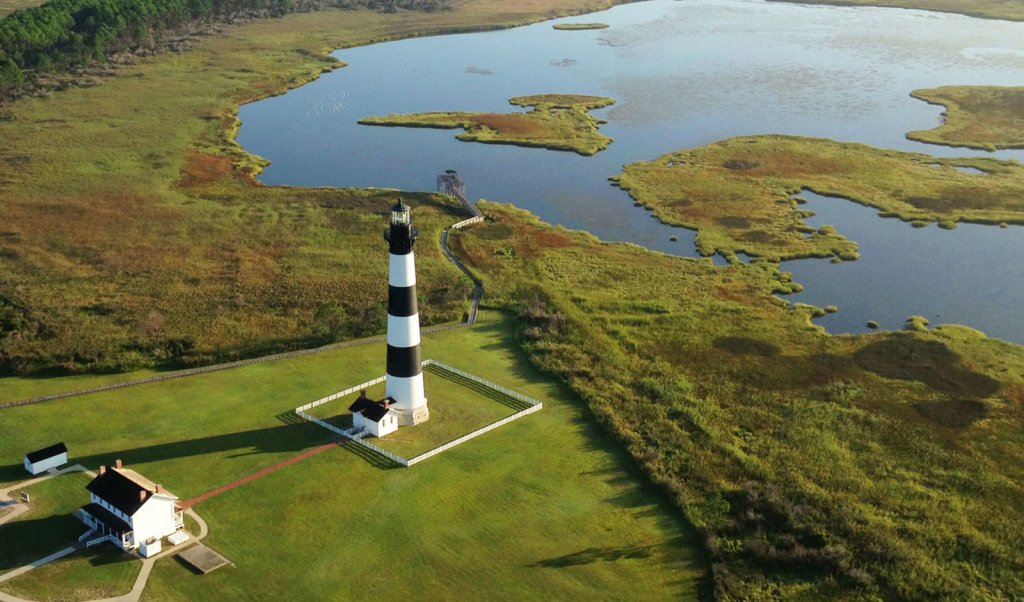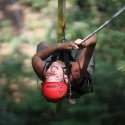Outdoors in the Outer Banks
Exploring the bounty of activities in the OBX, North Carolina
The Outer Banks of North Carolina, or “OBX” as fans call the islands, offer a front seat to Mother Nature, with more than 100 miles of beaches that sweep way out into the Atlantic Ocean. The Cape Hatteras National Seashore offers some of the largest tracts of undeveloped coastline in America that are easily accessible by car. All that access to nature and the elements that shaped the islands has provided opportunities for great adventures in a beautiful setting.
Shore thing
The beaches are what attract most visitors to the Outer Banks, and with good reason. More than 30,000 acres of surf and sand provide limitless potential for fun. Once you attempt the obvious, swimming, or wading in the giant pool that is the Atlantic, the magic of the Outer Banks will entice you to try windsurfing or sea kayaking. Teachers from one of the area outfitters can have you confidently windsurfing in less than two hours. The constant gentle morning and afternoon winds, averaging from 7 to 15 miles per hour, and the warm, shallow waters of the sound yield perfect conditions for the beginning windsurfer.
Explore the Cape Hatteras National Seashore on a guided horseback tour or take a 4×4 on one of the remote beaches that’s not accessible for those without permits. Enjoy fishing, beachcombing, and a preserved wildlife refuge perfect for watching coastal waterfowl. Need a little more adrenaline rush? Take a hang gliding lesson over the tallest dunes on the East Coast at Jockey’s Ridge State Park. This 426-acre park has two self-guided trails, and nature programs are available year-round. Besides hang gliding, many visitors enjoy kite flying, hiking, and picnic facilities. Perch yourself high atop the East Coast’s highest sand dune, and watch a one-of-a-kind sunset along the ridge.
Experience the classic lighthouse climb and tour. The 1871 Bodie Island Lighthouse opened for climbing to the public for the first time in 2013, following extensive renovations. It offers spectacular views of the national seashore and is close to the resort town of Nags Head, NC. From there, venture south to the village of Buxton, on Hatteras Island, to climb the tallest brick lighthouse in America: the Cape Hatteras Lighthouse. The iconic black-and-white-spiral landmark has served as a warning to generations of mariners navigating the Diamond Shoals. Both lighthouses offer night climbs during full moons, seasonally.
Water abounds here, and so do watersports. Wind and waves make the Outer Banks the perfect location for kiteboarding year-round. The calm and shallow sounds make the ideal location for stand up paddleboarding. Kayak or canoe around the wildlife refuges. Featuring some of the nation’s best angling waters, the Outer Banks is a sport fisherman’s paradise. Fishing along the coast is offered in a variety of forms, year-round: surf and pier fishing, freshwater, fly and sound fishing, inshore, and offshore charter fishing the Oregon Inlet.
In memoriam

Take a stroll through our maritime forests or National Wildlife Refuges, along the boardwalks of Duck and Manteo, and through the Elizabethan Gardens. The gardens, located at Fort Raleigh National Historic Site, are a living memorial to the colonists from England who settled here in 1585. Fort Raleigh is also home to The Lost Colony outdoor drama. Bursting with action and excitement, The Lost Colony is the epic story of America’s first English colony. A group of weary men, women, and children waded ashore on Roanoke Island in July of 1587 to establish the first permanent settlement of its kind in the Americas. These 117 pioneers of Roanoke Island soon vanished into the vast wilderness. Their fate remains to this day unknown and is considered to be America’s greatest cold case.
Drive or fly drifting
Take a drive along the Outer Banks Scenic Byway. Americans have always had a special place in their hearts for the open road. It symbolizes adventure and freedom, both of which are captured beautifully along NC 12. This two-lane road winds through the Cape Hatteras National Seashore, the country’s first National Seashore, and connects large tracts of undeveloped beaches from the seven villages of Hatteras Island to towns north of Oregon Inlet, NC. The culture and natural sights along NC 12 are some of the country’s finest, which explains why it is an American Scenic Byway. Speaking of driving, play a round at one of seven coastal golf courses gracing the OBX while admiring the maritime forest and the Atlantic as you walk the fairways. Enjoy a variety of play and links-style championship courses.
The winds that shaped these islands also shaped history. Two brothers from Ohio set their sights on making the first powered flight and did so on December 17, 1903, near Kitty Hawk, NC. Explore the path of their flight and climb the hill to the monument dedicated to their persistence at the Wright Brothers National Memorial. Air tours—either in a Cessna, a 1942 open cockpit biplane, or helicopter—are a great way to see the Outer Banks and the waters surrounding it. Want to see the islands quicker or slower? Try skydiving or parasailing over the waters of the Roanoke and Albemarle sounds.


